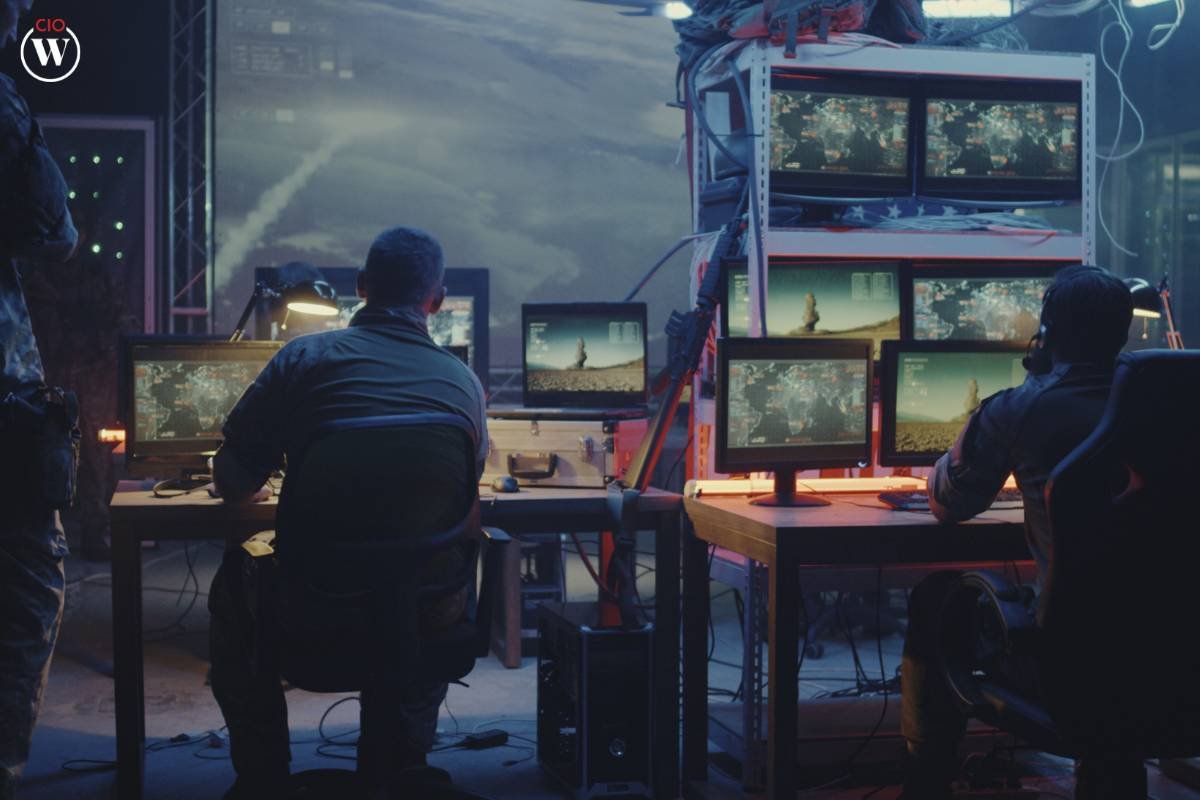In an era characterized by rapid technological advancements, the fusion of military operations with cutting-edge digital connectivity has given rise to the Internet of Military Things (IoMT). This integration of sensors, devices, and systems within military frameworks has revolutionized the way armed forces operate, enhancing efficiency, effectiveness, and overall strategic capabilities. As IoMT continues to evolve, several trends emerge, shaping the landscape of modern warfare.
Let’s delve into the 10 hottest trends driving the Internet of Military Things:
1. Advanced Sensor Technology:

Sensors lie at the heart of IoMT, providing crucial data for informed decision-making. From wearable devices for soldiers to unmanned aerial vehicles (UAVs), advancements in sensor technology enable real-time monitoring of various parameters, including location, health status, and environmental conditions. These sensors enhance situational awareness on the battlefield, enabling rapid responses and minimizing risks.
2. Interoperability and Integration:
In the complex ecosystem of modern warfare, interoperability is paramount. The integration of diverse military platforms, such as land-based vehicles, naval vessels, and aircraft, into a unified network enables seamless communication and coordination. IoMT facilitates interoperability by standardizing protocols and interfaces, allowing different systems to exchange data and collaborate effectively in joint operations.
3. Artificial Intelligence (AI) and Machine Learning:

AI-powered algorithms play a crucial role in processing vast amounts of data generated by IoMT devices. Machine learning algorithms analyze patterns, predict outcomes, and automate decision-making processes, enabling faster response times and optimized resource allocation. From predictive maintenance of equipment to autonomous surveillance, AI enhances the capabilities of military IoT systems.
4. Cybersecurity and Resilience:
With the proliferation of connected devices, cybersecurity emerges as a top priority in military IoT deployments. Safeguarding sensitive data and critical infrastructure from cyber threats is essential to maintain operational integrity and confidentiality. Advanced encryption techniques, secure communication protocols, and continuous monitoring mechanisms are crucial components of cybersecurity strategies in the Internet of Military Things, ensuring resilience against evolving cyber threats.
5. Edge Computing and Fog Computing:
Traditional cloud-based architectures may not always meet the stringent latency and bandwidth requirements of military operations. Edge computing and fog computing technologies bring data processing closer to the source, reducing latency and enhancing responsiveness in distributed IoMT environments. By decentralizing computational tasks and optimizing network bandwidth, edge and fog computing enable real-time decision-making at the tactical edge.
6. Unmanned Systems and Robotics:
Unmanned systems, including drones, unmanned ground vehicles (UGVs), and autonomous robots, are key enablers of IoMT capabilities. These platforms perform a variety of tasks, such as reconnaissance, surveillance, and logistics support, without putting human lives at risk. Leveraging Internet of Military Things, unmanned systems can operate autonomously or in collaboration with manned assets, extending the reach and effectiveness of military forces.
7. 5G Connectivity and Beyond:

The advent of 5G technology heralds a new era of high-speed, low-latency connectivity, ideal for supporting IoMT applications. With its increased bandwidth and reliability, 5G networks facilitate the seamless exchange of large volumes of data between interconnected devices, enabling high-resolution video streaming, remote piloting of drones, and augmented reality applications on the battlefield. Beyond 5G, emerging technologies like satellite-based communication systems promise even greater connectivity in remote and austere environments.
8. Energy Harvesting and Efficiency:
Powering IoMT devices in the field presents unique challenges, particularly in remote or hostile environments where traditional energy sources may be scarce. Energy harvesting technologies, such as solar panels, kinetic energy harvesters, and fuel cells, offer sustainable solutions for powering sensors, wearables, and unmanned systems. By maximizing energy efficiency and reducing reliance on conventional power sources, military IoT deployments can operate autonomously for extended durations, enhancing operational flexibility and resilience.

Here is a list of various Leadership styles in the military: 1. Authoritarian Leadership, 2. Transformational Leadership, 3. Servant Leadership, 4. Transactional Leadership, 5. Laissez-Faire Leadership, 6. Charismatic Leadership.
9. Multi-Domain Operations (MDO):
Modern military operations often span multiple domains, including land, sea, air, space, and cyberspace. Internet of Military Things enables seamless integration and coordination across these domains, facilitating MDO capabilities for enhanced situational awareness, cross-domain maneuverability, and integrated fires. By leveraging interconnected sensors, platforms, and command centers, military forces can achieve synergistic effects and maintain superiority across diverse operational environments.
10. Ethical and Legal Considerations:
As technologies continue to evolve, ethical and legal considerations surrounding their use become increasingly important. Issues such as data privacy, autonomous decision-making, and the ethical use of AI in warfare demand careful deliberation and regulation. International norms and legal frameworks must evolve to address the challenges posed by Internet of Military Things, ensuring that military applications adhere to principles of accountability, transparency, and proportionality in their use of technology on the battlefield.
Conclusion
In conclusion, the Internet of Military Things represents a paradigm shift in the way armed forces leverage technology to achieve their objectives. From advanced sensor networks to autonomous unmanned systems, IoMT trends are reshaping the modern battlefield, enhancing capabilities, and reshaping the modern battlefield. By embracing these trends and addressing associated challenges, military organizations can harness the full potential of IoMT to maintain superiority in an increasingly complex and dynamic security environment.









